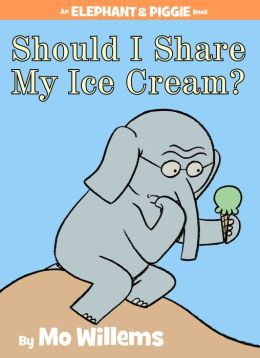
Alphabet Books
Chicka Chicka Boom Boom by Bill Martin Jr. & John Archambault, illustrated by Lois Ehlert, is an alphabet book that has stood the test of time and is well loved by all young children and adults as well. Most of us are familiar with it, but I am going to show you some new ways to use the end pages as a teaching tool! Many pre-school and kindergarteners come to school knowing how to sing The Alphabet Song but do not have 1:1 letter match.
When you open up this book, the end pages feature the entire alphabet, written on four lines. The first activity you can do with kids is to have them read the letters, line by line, pausing at the end of each line. This gives them a different take on the alphabet and a chance to view the letters in a 1:1 match. You can also have them read the letters backwards, starting with Zz or have them pick a line and read it, starting with Ll or Qu. In this way, they are much more likely to truly identify and learn the letter names. Another way to do this would be to say the letter sounds, rather than the letter names, again starting at various points.
Have children find the letters in their names. Names are so important to children . . . they have meaning to them. Don't count on kids being able to visualize these letters however. Write their name down and then have them find each letter in the end pages of the book.
Another game you could play would be to simply have them find a letter you name - "Point to the Ss", "Point to the Mm", - and let them have a turn telling you which letters to point to as well - they will love being the teacher! Again, you can reverse this game - "I am thinking of a letter that begins with /b/, and say the sound instead.
Use the end pages as a game board! Lay it out flat and drop a penny on it. Say the letter name & sound that the penny lands on or use some counters and a die. Roll the die and name the letter & sound of the letter you land on!
Raise the bar for older students. It is important for children to know the beginning, middle and end of the alphabet. Talk about which letters are in each part of the alphabet. Have them show you a letter in the beginning of the alphabet - name it and its sound, in the middle . . . in the end.
Discuss digraphs (two letters that together make a new sound such as /sh/ or /ch/ and blends (two letters that keep their individual sounds but "blend" together such as /br/ or /st/). Name a blend or digraph and have them point to the two letters that make that sound.
Discuss ending sounds such as /ed/ or /ing/ and have them point to the letters that make those sounds.
Raise the bar by having them point to the sound they hear at the end of a word. "Show me the letter you hear at the end of the word "man". "Show me the letter you hear in the middle of the word "net".
Point to all the vowels and tell me the sounds they make. . .
There are so many different and fun ways you can use the end pages of this book, Chicka Chicka Boom Boom, and it won't cost you a penny. Check the book out of your local or school library if you don't already own it.
The story itself is a wonderful one that lends itself to reading it with a beat! I always find myself snapping my fingers to the "chicka chicka boom boom" part.
Children can have a lot of fun pointing out all the letters and talking about what happens to them when they fall out of the tree. I always ask them if they think the rest of the alphabet will follow "a" up the tree the second time . . . Good "food for thought", as there are no right or wrong answers.
Some other Alphabet Books I Like:
Alligator Alphabet by Stella Blackstone and Stephanie Bauer
Here is a blogpost that lists:
I haven't read them all but it looks like you can click on each of them and it takes you to an Amazon review.
Now the next two alphabet books are definitely for older students because they would confuse our younger readers but would definitely be great for grade 2 and above and engage them in some thinking!!
(A wonderful thing . . .)
Q is for Duck An Alphabet Guessing Game by Mary Elting & Michael Folsom Pictures by Jack Kent
These two books make kids think about why! For example, in Q is for Duck, the first page says: A is for Zoo. Why? And the next page says:
Because . . . Animals live in the Zoo. Ahhh!!! Great, isn't it?
A is for Salad by Mike Lester
A is for Salad is slightly different. On the first page is a picture of an alligator eating a salad and says: A is for salad. You have to figure out what in the picture starts with "A" - in this case it would be the alligator.
I hope you have enjoyed my ideas and suggestions for alphabet books. Do you have a favorite alphabet book or an idea for an activity for an alphabet book? Please leave a comment or suggestion!



